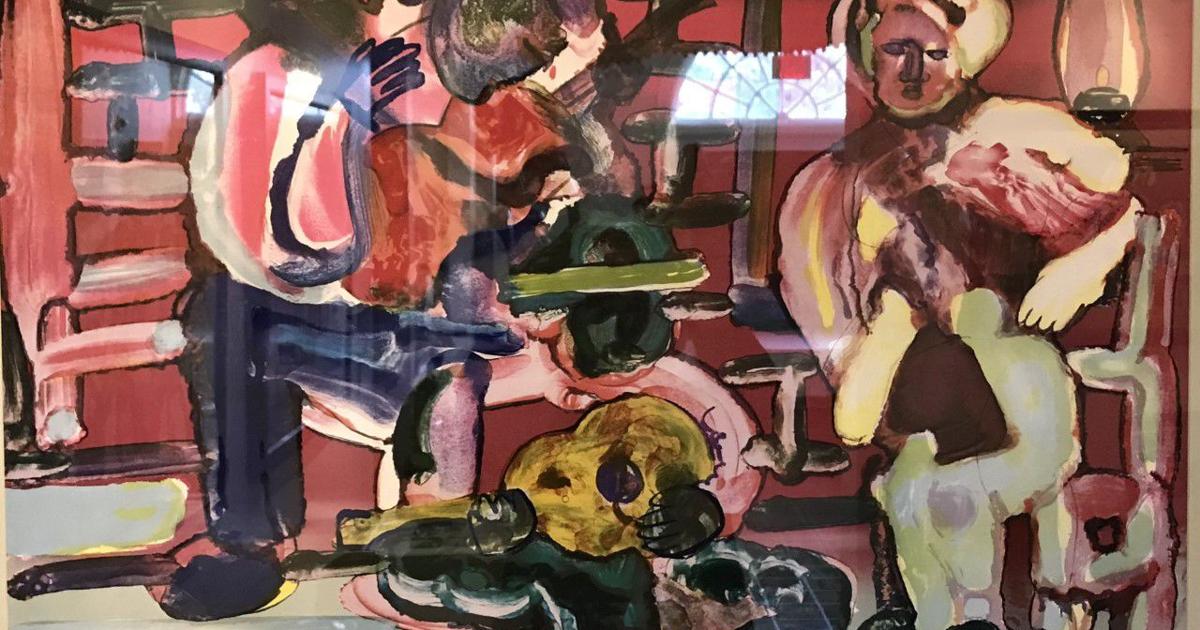Karachi Series 1 (Ken DeSouza, 7:42pm, 25th August 2008, Ramadan, Karachi)
2008 - Photography (Photography)
Bani Abidi
The threshold in contemporary Pakistan between the security of private life and the increasingly violent and unpredictable public sphere is represented in Abidi’s 2009 series Karachi . These staged photographs were shot against the backdrop of the city’s empty streets at sundown during the holy month of Ramadan. During this time, Muslims fast and retreat indoors, leaving the city eerily empty. By portraying ordinary citizens from religious minorities, the photographs reclaim the occupation of public space. Domestic gestures are brought forward and presented in the streets. By being so specific about the times and locations where they were shot, Abidi tests the political potentials of these everyday gestures. In Karachi Series I (Ken DeSouza, 7:42pm, 25th August 2008, Ramadan, Karachi) (2009), a man in a white shirt polishes his shoes without further revealing anything else about his identity. Presented in lightboxes, the pictures’ backlit luminosity exaggerates their absurdity and strangeness.
Bani Abidi’s practice deals heavily with political and cultural relations between India and Pakistan; she has a personal interest in this, as she lives and works in both New Delhi and Karachi. The artist’s subject matter ranges from border tensions to immigration conflicts, cultural diversity, and the relationship between private and public space. She works in the media of video, photography, and drawing.
Colors:
Related works featuring themes of: » Artist as Ethnographer, » Collective History, » Conflict, » Cross-Cultural Dialogue
» see more

© » KADIST
Simon Starling
2007Invited in 2007 to the Museum Folkwang in Essen (Germany), Simon Starling questioned its history: known for its collections and particularly for its early engagement in favor of modern art (including the acquisition and exhibition of works by Cézanne, Gauguin, Van Gogh, Matisse), then destroyed during the Second World War, the museum was pillaged for its masterpieces of ‘degenerate art’ by the nazis...

© » KADIST
Mariana Castillo Deball
2015Taking archaeology as her departure point to examine the trajectories of replicated and displaced objects, “Who will measure the space, who will tell me the time?” was produced in Oaxaca for her exhibition of the same title at the Contemporary Museum of Oaxaca (MACO) in 2015...

© » KADIST
Xiaoyun Chen
2006The image of rusted nails, nuts and bolts as shrapnel sandwiched between a fried Chicken burger highlights the contrast between decadence and destruction...

© » KADIST
Clarissa Tossin
2017Clarissa Tossin’s film Ch’u Mayaa responds to Frank Lloyd Wright’s Hollyhock House (constructed 1919–21) in Los Angeles, an example of Mayan Revival architecture...
Other related works, blended automatically
» see more

© » KADIST
Bani Abidi
2008The threshold in contemporary Pakistan between the security of private life and the increasingly violent and unpredictable public sphere is represented in Abidi’s 2009 series Karachi ...

© » KADIST
Simon Starling
2007Invited in 2007 to the Museum Folkwang in Essen (Germany), Simon Starling questioned its history: known for its collections and particularly for its early engagement in favor of modern art (including the acquisition and exhibition of works by Cézanne, Gauguin, Van Gogh, Matisse), then destroyed during the Second World War, the museum was pillaged for its masterpieces of ‘degenerate art’ by the nazis...

© » KADIST
Mariana Castillo Deball
2015Taking archaeology as her departure point to examine the trajectories of replicated and displaced objects, “Who will measure the space, who will tell me the time?” was produced in Oaxaca for her exhibition of the same title at the Contemporary Museum of Oaxaca (MACO) in 2015...

© » KADIST
Xiaoyun Chen
2012The lengthy titles in Chen Xiaoyun’s work often appear as colophons to his photographs that invite the viewer to a process of self realization through contemplating the distance between word and image...
Related works sharing similar palette
» see more

© » KADIST
Antonio Vega Macotela
2022The mines at Potosí are both the site and subject of this work, also titled Potosí, by Antonio Vega Macotela...

© » KADIST
Amapola Prada
2013In the video Unit/y we see Amapola Prada in the center of the screen wearing an oversized, worn out sweatshirt, socks and flip-flops—standing motionless on a dimly lit street in her native Lima, Peru...
Other works by: » Bani Abidi
» see more

© » KADIST
Bani Abidi
2008The threshold in contemporary Pakistan between the security of private life and the increasingly violent and unpredictable public sphere is represented in Abidi’s 2009 series Karachi ...

© » KADIST
Bani Abidi
2012The perceived effortlessness of power, projecting above experiences of labored subordination is examined in Death at a 30 Degree Angle by Bani Abidi, which funnels this projection of image through the studio of Ram Sutar, renowned in India for his monumental statues of political figures, generally from the post-independence generation...
Related artist(s) to: Bani Abidi » Shilpa Gupta, » Adel Abdessemed, » Adrian Paci, » Dan Perjovschi, » Dora Garcia, » Eko Nugroho, » Hou Hanru, » Oliver Ressler, » Pedro Reyes, » San Francisco
» see more

© » KADIST
Dora Garcia
2012KLAU MICH is a TV and performance project by Dora García with Ellen Blumenstein, Samir Kandil, Jan Mech, TheaterChaosium, and Offener Kanal Kassel, during the 100 days of dOCUMENTA (13)....

© » KADIST
Eko Nugroho
2009Nugroho’s installations and performances have their roots in the shadow puppet rituals in Indonesia, particularly the Javanese Wayang tradition whose essence is in the representation of the shadows...

© » KADIST
Pedro Reyes
2005In Reyes’s words, “We should be able to extract the technological nutrients before we excrete our waste...







